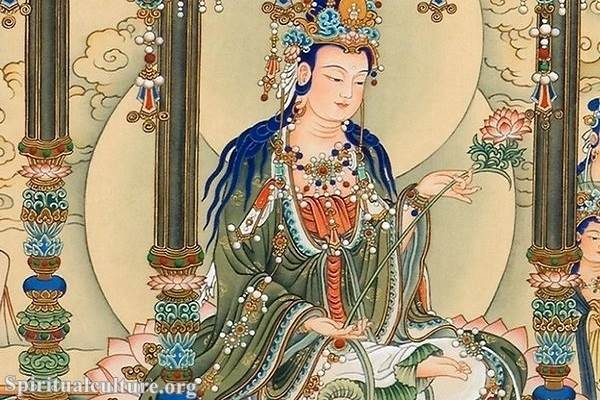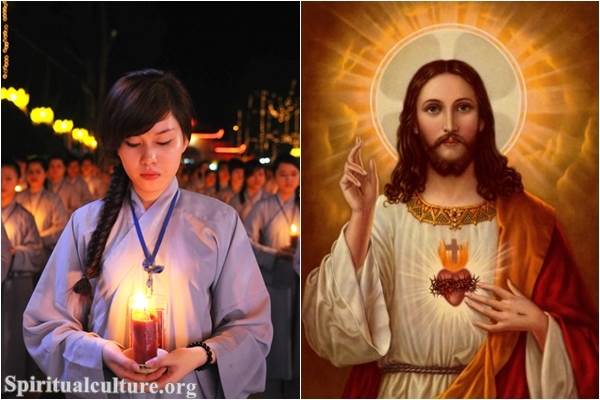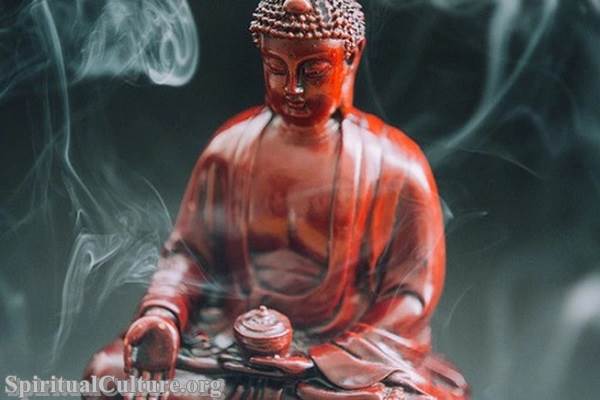In the quiet stillness of contemplation, when the noise of the world fades and the heart turns inward, there arises a question — not of how to live, but what life truly is. Buddhism, one of the most profound spiritual traditions of humanity, does not begin with answers of comfort but with clarity. At the core of this path lie three foundational insights into the nature of existence itself: Dukkha (suffering), Anicca (impermanence), and Anattā (non-self). These are not just abstract doctrines; they are truths meant to be seen, felt, and realized within the fabric of everyday life.
In this article, Spiritual Culture invites you to explore the Three Marks of Existence, not as distant teachings, but as mirrors reflecting your own journey. What do these truths reveal about who you are, what you cling to, and how you might find freedom?
What Are the Three Marks of Existence?
The Buddha’s awakening was not a mystical vision of otherworldly realms, but a penetrating insight into reality as it is. He saw that all conditioned things — all phenomena born from causes — share three characteristics:
- Dukkha (Suffering or Unsatisfactoriness)
- Anicca (Impermanence)
- Anattā (Non-Self)
These are known as Ti-lakkhaṇa in Pali or the Three Marks of Existence. Together, they form the existential DNA of samsara — the world of becoming, change, and rebirth. To recognize them deeply is to walk the path of awakening.
Let us journey into each one.
Dukkha – The Inescapable Unsatisfactoriness of Life
The First Mark: Dukkha Is Not Just Pain — It Is the Unsettled Nature of All Things
Often translated as suffering, Dukkha is a profound and layered concept. It encompasses not just physical or emotional pain, but the basic unsatisfactoriness that permeates even pleasurable experiences.
The Buddha said:
“Birth is suffering, aging is suffering, illness is suffering, death is suffering. Union with the unpleasant is suffering; separation from the pleasant is suffering; not getting what one wants is suffering.”
— Dhammacakkappavattana Sutta
But Dukkha goes even further — it includes the subtle restlessness, the fleetingness of joy, and the anxiety of clinging.
Dukkha in Daily Life
- We eat a delicious meal, but hunger returns.
- We fall in love, but time and change challenge the bond.
- We achieve a goal, only to set another.
Even moments of bliss carry a shadow — the fear of losing them.
Why Acknowledge Dukkha?
Recognizing Dukkha is not pessimism; it is the beginning of liberation. Denial keeps us trapped. Acceptance opens a doorway. As Thich Nhat Hanh writes, “To be alive is to suffer. But to live well is to embrace suffering with awareness.”
Anicca – The Impermanence of All Phenomena
The Second Mark: Nothing Lasts, and That’s the Law of the Universe
Anicca means impermanence — the reality that all things arise and pass away. Nothing, absolutely nothing, remains fixed.
From galaxies to snowflakes, from emotions to empires — all is transient.
“All conditioned things are impermanent. When one sees this with wisdom, one turns away from suffering.”
— Dhammapada, Verse 277
Change Is Not the Enemy — It Is the Teacher
Often, we resist change because it threatens what we love or rely upon. But Anicca invites us to see change as the truth, not as a tragedy. Every flower wilts, but in doing so, it makes way for the seed. Every heartbreak ends a chapter, but begins a new one.
What Does Impermanence Teach Us?
- Do not cling. What we grasp is already slipping away.
- Do not despair. Pain also passes.
- Live mindfully. Each moment is unique — fleeting but full.
The more we contemplate Anicca, the more we begin to see beauty in the ephemeral, and peace in letting go.
Anattā – The Mystery of Non-Self
The Third Mark: There Is No Permanent, Unchanging Self
Perhaps the most challenging of all is Anattā — the doctrine of non-self. Unlike many traditions that speak of a soul or eternal essence, Buddhism teaches that what we call “self” is merely a bundle of conditions — body, feelings, perceptions, thoughts, and consciousness — constantly shifting.
“Just as a chariot is only a combination of parts, so too is the person — no part alone is the self, and no self exists beyond the parts.”
— Samyutta Nikaya 5.10
Who Are You, Really?
When you say “I,” what do you mean?
- The body? It changes every moment.
- The thoughts? They arise and fade.
- The memories? They evolve, distort, disappear.
The Buddha taught that clinging to a fixed self is the root of suffering, because we try to protect, defend, or assert something that doesn’t truly exist in the way we think.
Non-Self Is Not Nihilism — It Is Freedom
Anattā is not saying that “you are nothing.” Rather, it says that you are not what you think you are — and this realization brings compassion, flexibility, and peace. When there is no rigid “me,” there is room for growth, forgiveness, and connection.
How the Three Marks Work Together
These three are not separate ideas, but interwoven truths:
- Because everything is impermanent (Anicca), there is no fixed self (Anattā).
- Because we cling to the impermanent, we experience suffering (Dukkha).
- When we see through the illusion of permanence and self, suffering begins to dissolve.
It is this profound insight that underlies the Four Noble Truths, the Eightfold Path, and the entire architecture of Buddhist practice.
Real-Life Reflection: The Glass Already Broken
There’s a well-known Zen story told by Ajahn Chah:
“You see this glass? I love this glass. It holds the water beautifully. When I tap it, it has a lovely ring. One day it will break. The truth is, the glass is already broken. Because I understand that, every moment with it is precious.”
This is the heart of the Three Marks — knowing that things are impermanent, that we cannot possess or preserve them, and that the idea of a “self” to whom they belong is itself a mirage. But this is not a reason to despair — it is a reason to love more deeply, live more fully, and let go more freely.
Reflect and Reimagine
You are not asked to believe the Three Marks. You are invited to observe them in your own experience.
- Notice how your moods shift, your body changes, your desires evolve.
- Reflect on the impermanence of both joy and sorrow.
- Ask: What do I cling to? What am I afraid to lose?
As Spiritual Culture, we invite you to let these truths be not merely ideas, but insights. Not something to read, but something to feel. They do not diminish life — they make it luminous.
In the end, to see Dukkha, Anicca, and Anattā is to wake up. To wake up is to be free.
Walk gently. Let go gratefully. And live awake.



